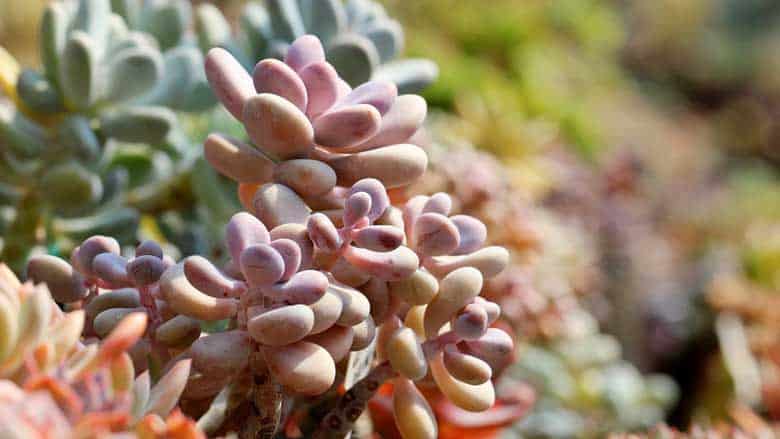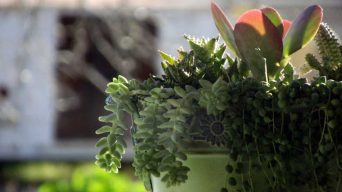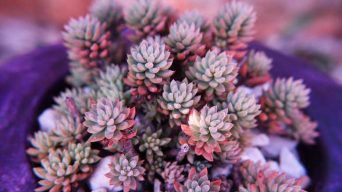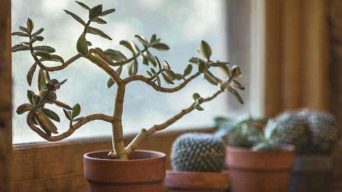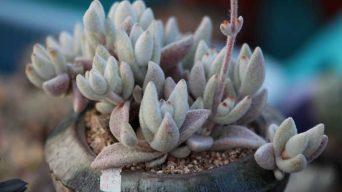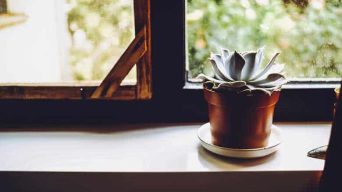Succulents are some of the most beautiful plants that you can find in your garden.
They come in various shapes, colors, and sizes, which makes them perfect for decorating any type of space.
But are succulents perennial or annual plants?
There are many types of succulents, but most of them are perennial, which means that they can last for many years. However, some kinds of succulents are annuals, which means that they only grow for a single season and then die.
This article will cover which types of succulents fall into each category and the differences between annuals and perennial succulents.
Succulents Life Cycle
The life cycle of a succulent depends on whether or not the plant you are growing is perennial or annual.
Annual succulents only live for one season, and perennial plants will last many seasons.
Difference Between Annual and Perennial Succulents
Annual succulents have a much shorter life cycle than perennial ones do- they typically only live through their first summer before dying off altogether.
Instead of growing long roots as perennial varieties do, annual types of succulents grow thick stems or a single stalk of leaves.
On the other hand, Perennial succulents can live for many years and have several different growing stages where they will sprout new leaves or branches from their older ones.
Perennial succulents typically grow roots deep into the soil- sometimes as far as three feet deep.
When perennial succulents come into the fall, they often go dormant and start to lose their leaves until springtime comes around again.
Perennial succulents are more common than annual ones because of how long-lived they can be! They’re also perfect for indoor plants or gardeners who don’t want to worry about replanting every year.
Annual succulents are perfect if you want a low-maintenance plant and can last through one season without much care.
They’re also helpful for people who don’t have the time or money required to take care of perennial plants but still love having them around their homes!
Perennial Succulents
Some types of perennial succulents include:
Carpobrotus modestus
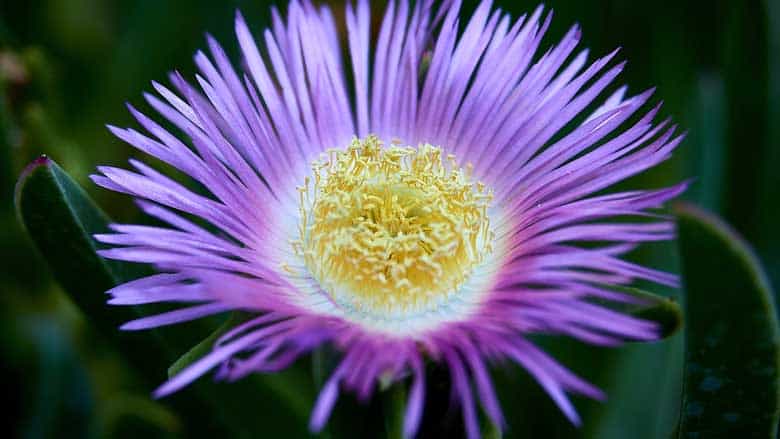
Carpobrotus modestus, commonly known as Inland Pigface, is a perennial succulent that is native to Australia.
This plant has leaves arranged in two opposite rows, and it grows from a thick, fleshy stem.
This succulent has beautiful purple-colored flowers, and it is very easy to grow. It also produces fruits that are usually small in size.
Carpobrotus modestus is mainly used as a groundcover or drought-tolerant plant. It is also used to create an attractive edge or to create a barrier.
Crassula capitella
Crassula capitella, more commonly known as the Campfire Plant, is a perennial succulent native to South Africa.
It has leaves that vary between light green and reddish-colored. The leaves get smaller near the top of a rosette and change into bracts at the end of a stem.
The Campfire Plant is a perennial succulent that blooms with small white flowers in the summer.
Curio rowleyanus
Curio rowleyanus (syn. Senecio rowleyanus), more commonly known as the String of Pearls, is a perennial succulent native to South Africa.
This succulent is a trailing stem that can grow 2-3 feet long. This plant has an attractive “curly” appearance and is a good candidate for a hanging basket.
The flower is white with colorful stamens. The flowers are hardy and can be kept in the garden all year round.
Echeveria elegans
Echeveria elegans, also known as Mexican snowball, is a species of flowering plant in the family Crassulaceae native to Mexico.
This succulent is an evergreen perennial that grows to 5-10 cm tall by 50 cm wide.
It has blue-green leaves that are shaped like a rosette. The stem of the plant is thin, and it blooms in winter and spring.
Euphorbia tithymaloides
Euphorbia tithymaloides is a perennial succulent spurge that can grow up to 8 feet (2.4 m) tall.
Its glabrous leaves can be up to 3 inches (7.5 cm) long and are arranged oppositely on the stem with acuminate shapes.
The plant has bifid and ovate floral leaves and bright red involucral bracts with irregularly acuminate shapes. It generally blooms in mid-spring.
Haworthia retusa
Haworthia retusa, commonly known as Star Cactus, is a species of flowering plant in the family Asphodelaceae, endemic to South Africa.
It is a small succulent plant that forms star-shaped rosettes. It has fleshy, lime green leaves and triangular translucent tips marked with longitudinal lines.
The leaves of this perennial succulent are deltoid, recurved, and can be up to 3.2 in (8 cm) long and 0.8 in (2 cm) wide.
Small tubular flowers appear in the spring or summer on unbranched flower stalks, which grow up to 20 inches (50 cm).
Pachyphytum bracteosum
Pachyphytum bracteosum is a perennial succulent undershrub native to Mexico. It grows up to 12 inches tall, with silver-grey leaves that produce spikes of flowers.
The plant’s leaves are obovate, measuring up to 4.4 inches long and 2 inches wide, and 5.6 inches thick.
The large calyx and bracts that accompany the flowers are of a grayish-green or blue color, while the petals are red.
Annual Succulents
Some types of annual succulents include:
Atriplex hollowayi
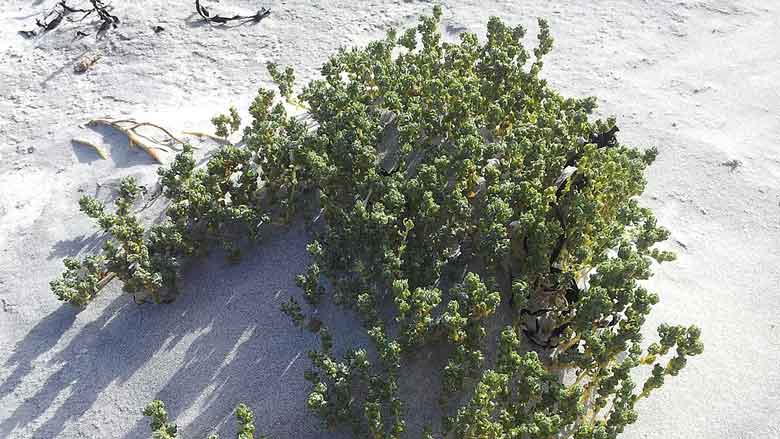
Atriplex hollowayi, commonly known as Holloway’s crystalwort, is a species of annual herbaceous plant endemic to New Zealand.
The plant can grow up to 1 meter in diameter in the sand.
Atriplex hollowayi’s leaves are roughly oval, measure 2-12 mm in length and 1-6mm in width, with irregular dentate margins. It is an annual succulent.
Cleretum bellidiforme
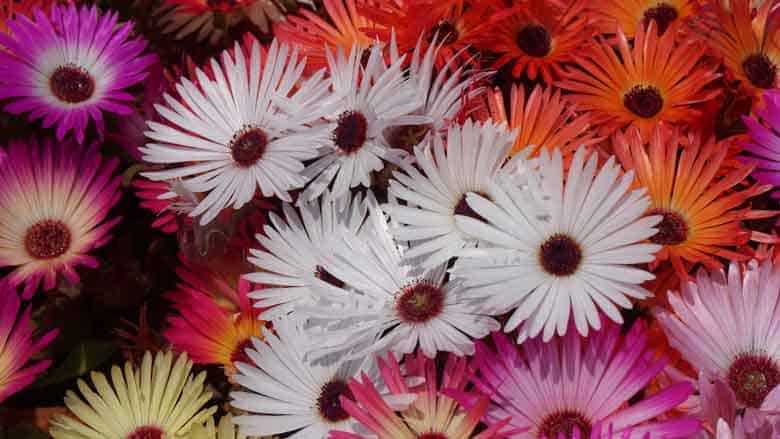
Cleretum bellidiforme, commonly known as Livingstone daisy, is a flowering plant in the family Aizoaceae, native to South Africa.
It is an annual succulent that grows 10 inches (25 cm) tall. It spreads to form a groundcover with several branches.
Leaves come in shades of green or maroon, and the flowers range in color from white to orange and typically have a diameter of up to 1.2 inches.
Lithops karasmontana
Lithops karasmontana, also known as the Karas Mountains living stone, is an annual flowering plant in the Aizoaceae family native to South Africa.
It is a clumb-forming succulent with stemless leaves that grow in pairs and resemble two stones.
This small succulent grows up to 2 inches (4 cm) tall. Flowers are white and come up to 2 inches (5 cm) across. They bloom in the fall.
Portulaca grandiflora
Portulaca grandiflora, most commonly known as Moss-rose purslane, is a succulent flowering plant in the family Portulacaceae, native to South America.
The Moss-rose is a low-growing annual succulent. This plant has narrow fleshy leaves and grows around 8 inches tall and 1 foot wide.
The flowers come in different colors, such as red, orange, yellow, and white under single, semi-double, or double forms.
Portulaca oleracea
Portulaca oleracea is an annual succulent in the family Portulacaceae. It is also known as common purslane, duckweed, little hogweed, and purslane.
Purslane is typically found with reddish, prostrate stems and clustered leaves at their joints.
There are yellow-flowered succulents, and the flowers may appear during any time of the year.
Salicornia europaea
Salicornia europaea, commonly known as glasswort, is a flowering plant in the family Amaranthaceae.
It is an annual succulent that flowers only once before dying and whose stems grow up to 16 inches (40 cm) tall. The leaves are tube-like, extending from one stem joint to the next.
It flowers in the late summer and ripens seeds in fall. The plant is hermaphrodite.
Sedum porphyreum
Sedum porphyreum, commonly known as the purple stonecrop, is an annual succulent herb in the family Crassulaceae and endemic to Cyprus.
This small succulent is 3-6 cm high, with hairless stems that are reddish-green.
Leaves are spirally arranged and grow up to a length of 3-15 x 2-8 mm and can be either green or, more commonly, green-reddish.
The flowers of this plant are actinomorphic, which means they have bilateral symmetry and a white petal with a purplish keel. They flower from March to May.
Final Thoughts
Both perennial & annual succulent types have benefits that make them desirable.
They can be grown in various areas, and many people enjoy the unique beauty each succulent has to offer!
Whether you are a beginner or advanced succulent grower, perennial & annual types of succulents are available in a range of sizes and colors to fit your gardening needs!

